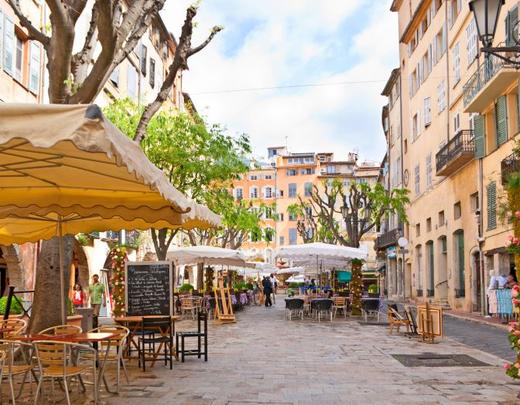
Plateau des Milles Etangs in Haute-Saône
Plateau des Milles Etangs in Haute-Saône – Little Finland
In a wild landscape at the heart of the Southern Vosges between the Ognon and Breuchin Valleys, lies an incredible area shaped by glaciers which disappeared 12,000 years ago leaving a thousand and one basins which have become ponds and peat bogs.
This patchwork of land and water features oak, beech and pine forests, meadows, bracken, heather and broom, dotted here and there with huge erratic boulders, a heritage of the Ice Age. It covers an area of 220km² from Lure to Faucogney and includes Melisey, Servance, Col des Croix (which marks the border with the Vosges département), the Plateau des Grilloux and its footpaths, the Cascade du Saut de l’Ognon and the Ballon de Servance. This extraordinary scenery led the region to be nicknamed «Petite Finlande » for its similarity with the landscape of the Scandinavian country.
Plateau des Milles Etangs – a fish farming area since the Middle Ages
Man and nature have worked together to shape this wild countryside. As is often the case, tradition and history show that the layout of this ‘land of a thousand ponds’ is very old. Scholars and historians agree that fish-farming began in the 11th century coinciding with the foundation of the Abbeys at Lure and Luxeuil-les-Bains and the patronage of the Seigneurs de Faucogney. Medieval monks took advantage of the topography of the land and created the ponds by extracting peat and managing the water.
Fish farming flourished on the plateau and is presented as the main driving force in the creation of the ponds. In fact, on a timeline starting from the 11th century fish farming developed as a consequence of agricultural mastery of the plateau. The low productivity of fish farming in mountain areas made it a complementary activity. The boom in fish farming was a consequence of pond development and not the reason for their creation.
Le plateau des Milles étangs un lieu de pisciculture dès le Moyen-Age

Les hommes se sont associés à la nature pour modeler ces paysages sauvages. Comme souvent, la tradition et le récit historique rapportent un aménagement très ancien de ce territoire d’étangs. Les érudits et historiens s’accordent pour une mise en valeur piscicole à partir du XIe siècle en liaison avec la fondation des abbayes de Lure et de Luxeuil-les-Bains et avec le soutien des seigneurs de Faucogney. Les moines du moyen-Âge, modelant les reliefs, ont tiré avantage de la topographie et exploité les tourbières. Ils ont été les premiers maîtres de la gestion de l'eau. C’est ainsi que sont nés les étangs.
L’essor de la pisciculture sur le plateau est présenté comme le principal moteur de ces aménagements d’étangs. En fait, si on considère le XIe siècle comme fondement chronologique, le développement de la pisciculture est une conséquence de la conquête agricole du plateau. En effet, la faible productivité de cette pisciculture de montagne ne peut faire de celle-ci qu’une activité complémentaire. Il faut voir dans l’essor de la pisciculture la conséquence du développement des étangs et non l’origine de leur création.
Plateau des Milles Etangs – a paradise for walkers

Peat bogs provided a source of fuel in the past. At the turn of the 19th century, wood was rare due to population growth and increasing energy demands for industry, so ‘poor man’s coal’ was a precious commodity.
The Plateau des 1,000 Etangs has an abundance of paths, ideal for walking, mountain biking and horse riding. The Route des 1,000 Etangs is a 60km tourist route with 14 remarkable stops. It leads through colourful scenery dotted with numerous quaint villages housing unique reminders of bygone rural life like listed roodscreens and unusual mills. It is possible to view the plateau from above on a hot air balloon or plane trip with a professional.
This magical place, today a paradise of walkers and nature lovers, never fails to impress and is an open invitation for marvellous adventures in an ageless, almost mystic setting.
Discover Haute-Saône with Gites de France Haute-Saône : Colline Notre-Dame du Haut - Chapelle de Ronchamp, the heritage spa town of Luxeuil-les-Bains and Fougerolles, L’Ognon and its character villages"
Our selection of accommodations
Lodging
L'Harmonie
in La Chapelle-devant-Bruyères - Vosges
Lodging
La Cabane des Ecureuils
in Xonrupt-Longemer - Vosges
Our new accommodations
Guest house
Chambre de La Demeure des Monts de Gy
in Gy - Haute-Saône
Lodging
Les Hauts de Fretigney
in Fretigney-et-Velloreille - Haute-Saône
Le plateau des 1000 Etangs
Choisissez parmi les 800 hébergements de location de vacances : gîtes, chambres d’hôtes (Bed & Breakfast), city-breaks (locations en ville), gîtes de groupe ou hébergements insolites à proximité du Plateau des 1000 Étangs, dans les Vosges.
Découvrez ce lieu surnommé la “Petite Finlande” française, le temps d’un séjour ou d’un week-end, en explorant son incroyable mosaïque de petits étangs, de forêts et de prairies. Parcourez ses nombreux sentiers de randonnée, observez la faune et la flore locales, et laissez-vous séduire par la quiétude de ce paysage vallonné. Le Plateau des 1000 Étangs est un véritable paradis pour les amoureux de la nature et de la photographie.
Où que vous alliez, nos propriétaires vous accueilleront pour partager des moments uniques et des bonnes adresses. Vous créerez des souvenirs inoubliables de vos vacances !























































































































































































































